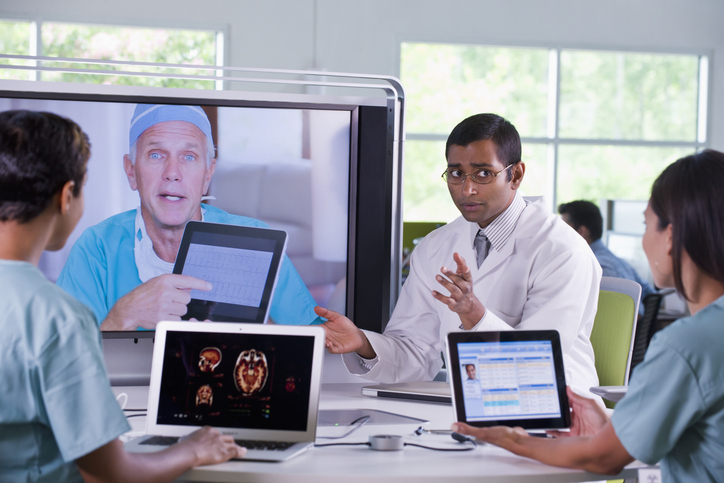When you go to a clinic, a doctor’s office, or visit a hospital, you have a lot on your mind. The last thing you need is a disjointed and uncomfortable experience while waiting for a healthcare professional or during a consultation. Similarly, if you are a nurse, a doctor, an administrator, or helping patients when they arrive, you want a clear path towards the right patient information and the most accurate diagnosis.
Today, all of this is possible. During the Healthcare Innovation Summit Africa 2024, held at the Maslow Hotel in Sandton, Johannesburg, Vodacom’s experts spoke at length about the intersection between healthcare and technology—not just about what is possible, but what is already happening.
“There are a lot of things we’re doing from both a private and public healthcare perspective, driving digital solutions for patient onboarding, promoting diagnosis and assessments – new innovations that we are quite excited about,” said Graeme Schippers, Vodacom Executive Head of IoT Sales.
Uplifting healthcare with connectivity and data
Many of the opportunities for better healthcare services grow from the foundation of technology that spurs progress in other sectors. The intersection between telecommunications and healthcare is particularly noteworthy. During a panel discussion at the event, Vodacom’s Executive Head of IoT – Public Sector, Sideko Mni, noted that two crucial technology ingredients underpin modern healthcare progress: connectivity and data platforms.

“You hear a lot about connectivity at this healthcare event, and for good reason. To be able to leverage technology and make those decisions around how to treat your patient, a key requirement is infrastructure. It’s important to invest in infrastructure, especially when you want to reach rural patients, because for these things to happen, you need the data to move.”
He cited the emerging technology of healthcare rings, which are smart devices that sit on someone’s finger collecting important metrics such as heart rate and blood pressure, “To share this information from the patient to the healthcare provider, you need connectivity.”
Mni added that data needs data platforms, “There are a lot of people with data, but it’s all in data islands. There is no platform connecting all this data. You need a platform to get the right information on time.”
Overcoming healthcare challenges
Connectivity and data platforms are important parts of effective healthcare experiences, both underpinning a global truth about improving the medical journey, said Maanda Ramutumbu, Executive Head of Vodacom’s IoT Centre of Excellence Verticals:
“Digital transformation enhances the customer experience. Patients must not dread going to the hospital. We need to make that experience as seamless as possible.”
Healthcare shares many of the same challenges as other sectors, such as water scarcity and energy insecurity. Numerous healthcare facilities are taking strain because of reduced access to water. Despite loadshedding receding into the background, load management still requires reliance on generators, leading to increased costs and inconveniences.
To tackle these issues, Vodacom has been collaborating with partners such as the Department of Health to deploy effective solutions. For example, it is deploying smart meters, load management devices, and resource management platforms to predict usage and control spending.

Vodacom and its partners are motivated by several factors. They are helping build streamlined and attractive experiences for both patients and medicare professionals. They also use technology to extend these benefits across regions, particularly rural areas. Above all, this is not a race to prove who the best technology company is, but to realise that opportunity only comes when you focus on delivering change for the right reasons.
“My message is this”, said Ramutumbu. “Number one—change is imminent. We cannot afford not to change. Second, the challenge is great, so this change is happening in a storm of challenges. However, there is an opportunity for us to use technology to create new value for the sector. No one company has all the answers. So, it’s very important to collaborate and make the delivery of value to patients and professionals our collective north star.”



